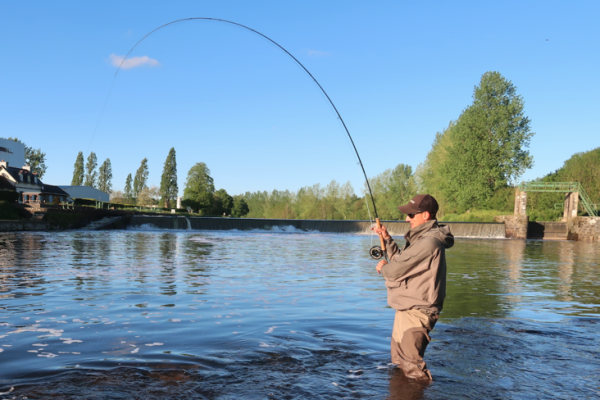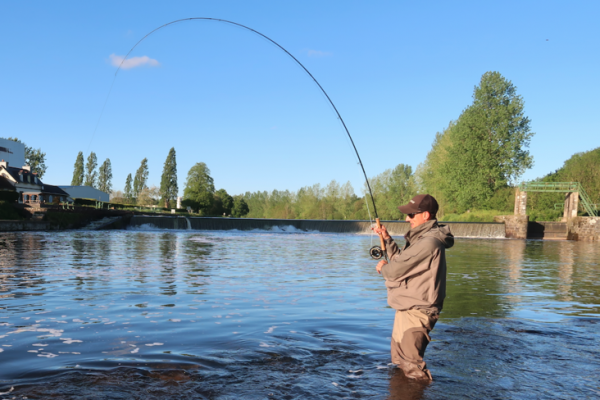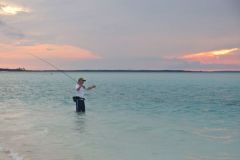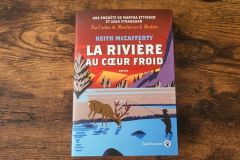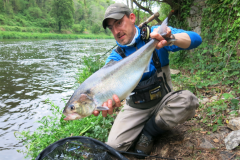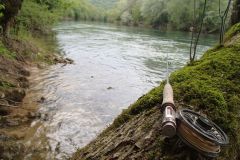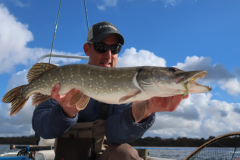Keep it simple but effective
Shad are migratory fish found in many French rivers. Like salmon, shad do not feed on their way up to freshwater, but are much more aggressive. So you need to use flies that are often colorful to trigger strikes. Flies dominated by orange, pink, chartreuse and yellow are often the most effective.
When it comes to tying shad flies that don't actually imitate a prey item, the key is to keep things simple and, above all, use the right materials. They need to be sturdy, mobile and often "flashy" (UV), which seems to particularly appeal to this migratory member of the Clupeidae family.
The shad is sometimes nicknamed the freshwater tarpon for its defense and wide-open-mouthed acrobatics!

Materials for mounting this shad fly
- Kamasan hook B 170 or B175 size 6 to 12
- UTC 70 Fluo orange mounting silk
- Silver or other diabolo eyes
- Flash pearl crystal
- Loon thin UV resin
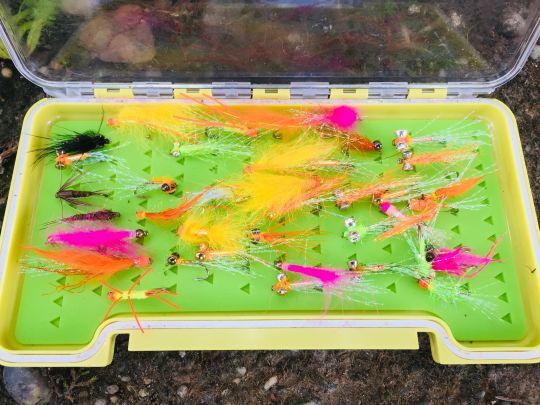
Use variants to adapt to changing conditions
I like to use this fly pattern throughout the shad season, from early April to late June, depending on the river. Of course, I have other models at my disposal. Of course, I mount different variants in color and size/weight.
The above-mentioned colors are all very appealing, but I'm partial to orange, pink and glossy, especially for shad, alosa alosa .
Depending on the flow and the depth of the fish, I use different hook sizes and weights. At the start of the season, I use hooks in sizes 6 and 8, but I quickly move down to smaller sizes. When the water is low and clear, I mount this model on very small, strong iron hooks up to size 12.
Weights need to be adapted to the size of the hook in order to be effective. Smaller models are also very effective when the fish have been over- or under-stressed.
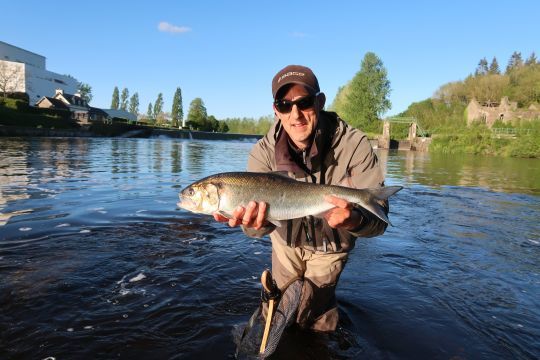
How to catch your first shad on the fly?
The most important thing when fishing for shad is to find the right depth and fly speed. Depending on water temperature, fish may be reluctant to come up to fetch the flies. You'll need to fish with a sinking line, or add polyleaders of different densities to a floating line by trial and error or by habit, depending on the flow. To find the one that allows you to offer your flies at the right "stage".
Once you've found this swimming depth, you'll also need to vary the presentation angles to play on the fly's drift speed, which is often very important.
If you see shad appearing on the surface regularly in the same place, try to bring your fly to the surface in this area by mending your line. You shouldn't have to wait too long for a hit.
NB: beware, shad are very fragile fish. Avoid handling them too much and taking them out of the water. To put them back in their element, just keep the fish head upstream in a current, and let it swim back out on its own. The back-and-forth movement is strictly useless.
